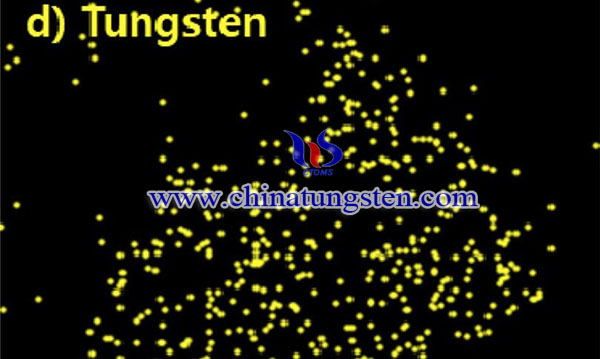Tungsten Trioxide Doped TiO2 Photocatalysts for Degradation of Diethyl Phthalate
- Details
- Category: Tungsten Information
- Published on Tuesday, 21 September 2021 00:52
Diethyl phthalate (DEP) is an odorless, colorless, oily liquid. It is used to make plastics, pesticides, cosmetics, and aspirin, as well as toothbrushes, auto parts, toys, tools and food packaging. At the same time, DEP has a negative impact on human health and causes environmental problems.
Titanium dioxide (TiO2) is known as an n-type semiconductor and is considered an ideal candidate due to its unique advantages such as low cost, non-toxicity, and strong redox characteristics. However, TiO2 can only be activated by ultraviolet radiation with a wavelength below 388nm due to its inherent high band gap energy (3.2eV). Doping tungsten trioxide (WO3) is a feasible way to reduce its band gap.

Thus, it is necessary to develop a modified photocatalyst which enhanced the removal efficiency of DEP. Tungsten trioxide doped TiO2 photocatalysts for degradation of diethyl phthalate have been prepared by depositing tungsten oxide onto titanium dioxide through the liquid phase plasma. The preparation process of WO3-TiO2 photocatalysts is as below:
Commercial titanium dioxide P-25 obtained from Degussa was used. The P-25 powder has an average particle size of 25nm and is made of a combination of anatase (80%) and rutile (20%). Reagent grade tungsten hexachloride (WCl6) is used as a precursor to form tungsten oxide on the surface of the titanium dioxide photocatalyst.

First, mix 1-5 mM tungsten hexachloride with 250 mL of a solution containing 100 mL of ethanol and 150 mL of deionized water, and stir to form a uniform precursor solution. Please note that the organic solvent ethanol can completely dissolve tungsten hexachloride, which is almost insoluble in deionized water. Next, add 0.5g of TiO2 powder to the precursor solution and stir vigorously for 10 minutes to achieve uniform distribution (the distribution of the powder in the reactant solution). Then, the reaction solution was charged into a reaction chamber equipped with a pair of tungsten electrodes arranged side by side. After supplying sufficient voltage from the power supply to the tungsten electrode, the LPP process is carried out in the reaction chamber for 1 hour to allow tungsten oxide to adhere to the TiO2 surface. After the LPP process is complete, repeated centrifugation and washing can ensure that unreacted starting materials and solvents are completely removed from the precipitate. The precipitate was dried at 373K for 24 hours to obtain the final product TODTP.
In conclusion, tungsten trioxide doped TiO2 photocatalysts for degradation of diethyl phthalate have been prepared by depositing tungsten oxide onto titanium dioxide through the liquid phase plasma. The amount of tungsten oxide produced by the LPP process depends on the initial precursor concentration in the reactant solution. The increase in the loading of tungsten oxide on the surface of TiO2 leads to a decrease in the band gap energy. Although the best degradation performance of the bare TiO2 photocatalyst was observed under UV light source, the degradation rate of the modified TiO2 photocatalyst under blue light was 1.7-6.2 times higher than that of the bare TiO2 photocatalyst.
- Tungsten Oxide Manufacturer & Supplier, Chinatungsten Online: www.tungsten-oxide.com
- Tungsten News & Prices of China Tungsten Industry Association: www.ctia.com.cn
- Molybdenum News & Price: news.molybdenum.com.cn
- Tel.: 86 592 5129696; Fax: 86 592 5129797; Email: sales@chinatungsten.com



 sales@chinatungsten.com
sales@chinatungsten.com